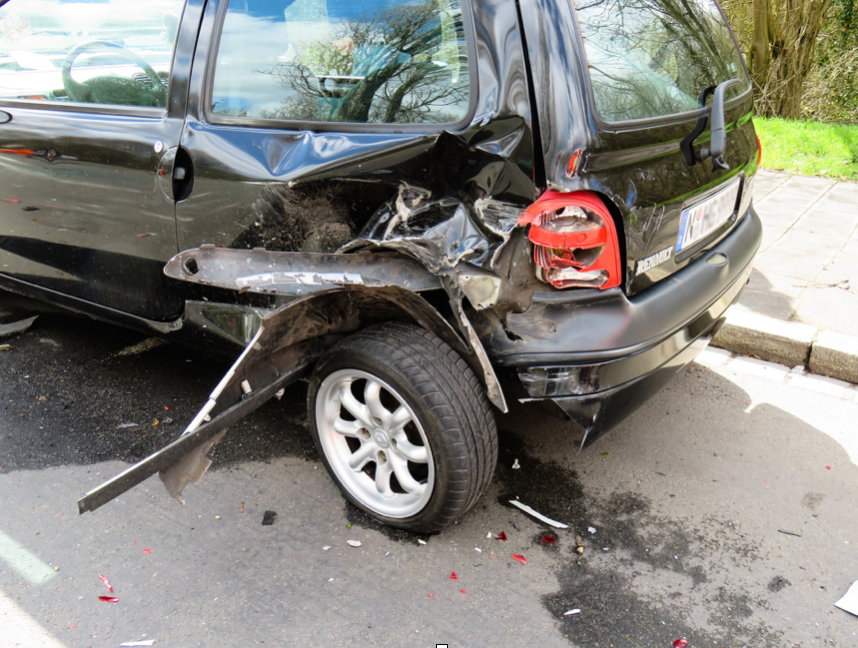The key difference between full tort/at-fault policies and choosing a no-fault/limited tort insurance policy is whether the victim has a right to sue.
Choosing what kind of car insurance to buy and dealing with the repercussions of that choice is pretty cut and dried in most states. You either live in an at-fault or no-fault state, and the insurance companies sell plans that comply with the laws and mandates of that state.
When you get in a car accident in most states, how to handle the claims and fault determination is generally determined by state law and the insurance plan you’ve purchased. Along with the legal repercussions of determining “fault” after a car accident, determining whether you can file a claim for personal injury and bodily injury after a car accident in Philadelphia, PA, Lexington, KY, or Trenton, NJ is just a bit more confusing due to their status as choice limited or full tort states.
Fault or No-Fault – Understanding the Difference
All 50 states plus Washington D.C. require you to cover a motor vehicle with motor vehicle insurance and are either “at-fault” or “no-fault” states. These options determine the type of car insurance required, how responsibility and compensation are divided up, and how litigation can be instigated in the event of a car accident that causes property damage, injury, loss of wages, etc.
While a majority of states are “at fault” states, there are 12 states that have adopted “no-fault” rules: Florida, Hawaii, Kansas, Kentucky, Massachusetts, Michigan, Minnesota, New Jersey, New York, North Dakota, Pennsylvania, and Utah. In all of these “no fault” states, fault does not matter for payment of medical bills up to a minimum amount of insurance coverage required (e.g., $5,000 in Pennsylvania and $15,000 in New Jersey). In other words, regardless of fault, every driver must make a claim with their own insurance company following an accident for medical bills to be paid up to a minimum dollar amount. This minimum amount of coverage for medical bills (and sometimes lost wages) under your own auto policy regardless of fault is generally referred as personal injury protection (PIP), which is required for all drivers in jurisdictions with no-fault legislation as part of their vehicle insurance coverage. In its most restrictive form, the word “no-fault” refers to state laws that provide for the payment of medical bills and lost wage payments from your own policy regardless of fault and also limits the opportunity to sue for non-severe injuries, also called “limited tort.” There are some exceptions to limited tort in Pennsylvania and other states, which allow a driver to sue for personal injuries despite having chosen limited tort.
Of the 12 states that have adopted “no fault” coverage for medical benefits/wage loss and limit the ability to sue for only certain types of “serious injuries,” three states (Pennsylvania, Kentucky, and New Jersey) have “choice” of whether a driver chooses “limited tort” (limiting the ability to sue for pain and suffering for minor injuries) or “full tort” (no restrictions on the type of injury to sue for pain and suffering).
At-fault insurance policies are based on tort liability. Each insurer will pay for damages based on the degree or amount of fault that is determined for each party. This increases the likelihood of litigation, because determining how much fault each party holds can be subjective, and insurance companies like to argue their liability percentages down as low as possible. With at-fault insurance, the driver who is at fault has a responsibility to the other people and parties involved in the accident. Their insurance policy provides coverage up to their policy limits and could pay out up to those limits if enough of the liability has been determined to be their responsibility and the damages and injuries are sufficient.
If the not-at-fault party in an accident disagrees with the payout the insurance company offers, they can file a suit and seek economic damages like medical expenses, as well as non-economic compensation like pain and suffering or anxiety.
The parameters can vary by state, but the goal of no-fault insurance is to cut back on litigation and save on insurance premiums. The no-fault system was designed to provide each driver with medical insurance that will protect them in the event of an accident, regardless of who is at fault. It releases the innocent party from the obligation to show that another driver was at fault before they can be compensated for payment of medical bills for the accident. This can sometimes be referred to as PIP or personal injury protection. PIP insurance in Pennsylvania, for example, covers the first $5,000 in medical bills. This cuts down on litigation over small medical bills for minor accidents, which was the purpose of no-fault insurance. In the case of serious injuries that require extended medical treatment, there is still an opportunity to recover damages from another party, if they are determined to be at fault.
So, What’s Choice No-Fault?

A “choice no-fault” system allows a driver to choose to be restricted from bringing a lawsuit for non-serious injuries. So, when choosing your insurance coverage in this type of state, you can actually choose to limit your own legal rights to sue after a car accident by choosing “limited tort.” The attorneys at The Pearce Law Firm do NOT recommend this choice of limited tort, but many times victims of accidents have not consulted an attorney when purchasing car insurance and are given poor advice from an insurance agent. If you choose the “full tort” option (referred in some states as an at-fault policy), the claims system for bringing a lawsuit and recovering for pain and suffering works the same as it does in any traditional at-fault tort system state, and the driver retains their right to sue in the event of an accident. In states that have “choice,” it can become complicated because along with figuring out fault, the type of policy each driver has can have a big impact on outcomes.
The key difference between full tort/at-fault policies and choosing a no-fault/limited tort insurance policy is whether the victim has a right to sue, although as stated, there are some circumstances under a limited tort/no-fault policy where litigation is still possible. Confused? This is where a good car accident attorney in Philadelphia, Lexington, Cherry Hill, or other cities in no-fault/choice no-fault states is invaluable.
Example Scenarios in No-Fault Choice States
- Mary runs into the back of John’s car at a stoplight in Philadelphia. They both walk away with very minor soft-tissue injuries totaling less than $2,000 each including a hospital visit and a few physical therapy visits. They both have Pennsylvania auto insurance as they live in Pennsylvania. In Pennsylvania, if both Mary and John chose “limited tort,” not only would they operate under no-fault rules for medical bills under $5,000 and each of their insurances would handle medical expenses, but they would most likely not have any legal right to sue or collect against the “at-fault” party for pain and suffering damages. This is because they chose “limited tort,” which limits the ability to sue for only “serious” injuries or death.
- In this scenario, if John has chosen “full tort” insurance, and Mary has chosen “limited tort” insurance (which is possible in PA, NJ, and KY), John’s insurance would take care of his medical bills, but he would have the legal right to sue for pain and suffering damages if he can prove Mary was at fault and Mary’s insurance company would pay for her medical bills, but she would most likely not have the right to bring a lawsuit for pain and suffering for a non-severe injury against John, even if John was at fault.
- If Mary has “full tort” insurance, and John also has full tort insurance, both Mary’s and John’s PIP protection would cover their medical costs (up to a minimum of $5,000 in PA and $15,000 in NJ) as medical coverage is “no-fault,” but both insurance companies would seek an assignation of the blame on the other party’s part to cover any medical costs over the PIP mandatory coverage and other damages such as pain and suffering. If either party was not satisfied with the insurance company’s settlement proposal or offer, they both would have the right to bring a lawsuit even if the injuries were considered minor and collect against the insurance policy of the “at fault” driver for damages and costs that are over the PIP coverage.
Get Expert Help, It’s Worth It.
As you can see, at-fault, full-tort or no-fault, limited tort scenarios can be confusing. Hiring an expert to help you with a car accident in Pennsylvania or Jersey can make a big difference in your outcome, and they can ease your burden.


Join the conversation!